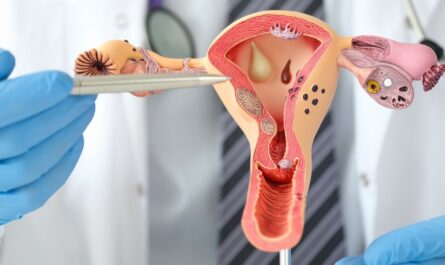Refurbished Medical Equipment: An Affordable Solution for Healthcare Facilities
The cost of purchasing new medical equipment has been steadily rising over the years. While latest technologies bring benefits to patient care, they also put a strain on healthcare budgets. Refurbished medical equipment provides an affordable alternative for hospitals and clinics looking to upgrade their systems without breaking the bank. This article explores the benefits of choosing refurbished options and how various healthcare facilities are leveraging them.
What is Refurbished Medical Equipment?
Heads: Refurbishing Process
When medical devices reach the end of their useful life with their original owners, they undergo a rigorous refurbishing process before being resold. The main steps in this process typically include:
– Dismantling and cleaning all components to remove any biohazards. Strict protocols are followed to ensure patient safety.
– Inspection and testing of all parts to identify any defects or areas needing replacement. Worn components are replaced with original manufacturer spare parts.
– Recertification to meet the electrical and mechanical safety standards. Electrical systems and moving parts are checked and repaired if needed.
– Aesthetic enhancement including repainting or reupholstering to give devices a like-new appearance.
– Performance testing to ensure systems meet original specifications. Parameters like radiation output, image quality etc. are calibrated.
– Warranty coverage offered matching major OEM warranties for peace of mind.
Heads: Cost Savings
The refurbishment process allows recycled devices to be remarketed at a significantly lower price point compared to equivalent new systems. Cost analyses have shown savings of 40-65% for various categories of refurbished medical equipment versus new ones. These savings can then be redirected to other priority areas in healthcare settings.
For example, a refurbished CT scanner that originally sold for over $1 million can be acquired for under $500,000. Similarly, an ultrasound machine priced new at $150,000 may be available refurbished for $50,000. These kinds of cost reductions open up portability and upgrade options for facilities with restricted modernization budgets.
Heads: Increased Access
By making advanced medical technologies more affordable, refurbished options help expand access to quality patient care services especially in underserved or rural communities.
Community hospitals, private clinics, and public health centers that cannot normally justify the higher expenditure for new equipment are able to offer sophisticated diagnostic services through refurbished alternatives.
This enables improved screening, earlier disease detection and monitoring capabilities even in remote locations. It bridges accessibility gaps compared to solely relying on referrals to large urban medical centers which involves time delays and additional costs for patients.
Heads: Environmental Sustainability
With the average medical device having a usable lifetime of 7-10 years before full replacement, recycling and reuse of equipment supports critical sustainability efforts in the healthcare sector.
It prevents hundreds of tons of still functional hardware from being discarded prematurely in landfills every year due to outdated technologies or expired depreciation schedules.
The energy and natural resources spared by refurbishing helps reduce the environmental footprint of medical waste. It also ensures fewer raw materials need to be extracted for manufacturing completely new devices.
Overall, refurbishment leads to more eco-friendly and socially responsible management of medical technology assets over their complete lifecycle compared to single-use models.
Heads: Meeting Emerging Needs
In light of evolving healthcare needs, refurbished options provide flexibility for establishments to periodically modernize selections and incorporate latest upgrades within budgets.
For example, the demand for imaging services is witnessing a rise globally due to an aging population and higher incidence rates of chronic illnesses like cancer.
Through refurbished CTs or MRIs upgraded with new software features, smaller clinics are able to start or bolster diagnostic radiology services tailored for their patient demographics – at a much lower entry point than fresh equipment investments.
Similarly, refurbished patient monitors with the latest clinical capabilities enable low-resource primary care facilities to safely expand in-patient admission capacities or establish step-down recovery areas.
Heads: Reliability and Quality Standards
There is a common misconception that refurbished medical devices will be more prone to breakdowns or deliver inferior results than new equivalents. However multiple studies have validated their dependability and performance quality.
Original equipment manufacturers themselves have set up authorized refurbishment centers adhering to the highest refurbishment standards. Comprehensive warranties further demonstrate confidence in renewed systems.
Strictly regulated third party refurbishers also do quality control testing equivalent to or exceeding factory standards before releasing systems for clinical usage again. Independent validation studies corroborate examination parameters match those of new devices.
With properly remanufactured equipment available at much lower costs, the total cost of ownership including maintenance turns out more competitive than new long-term when depreciation is accounted for. This dispels doubts around reliability.
In summary, refurbished medical devices present a practical means for healthcare facilities to regularly modernize capabilities aligned with patient and community needs – without overstretching budgets. With original quality assurance and comprehensive warranties, they deliver clinical results equivalent to new systems in a eco-friendly and affordable manner benefitting both providers and taxpayers. Their increased adoption exemplifies how advantage can arise from responsibly recycling resources to expand equitable access to care.
Note:
1. Source: Coherent Market Insights, Public sources, Desk research
2. We have leveraged AI tools to mine information and compile it




